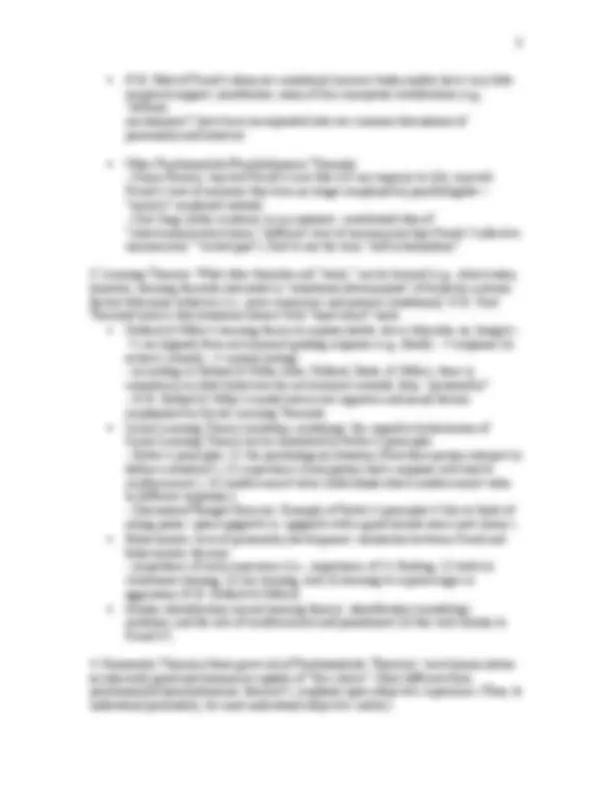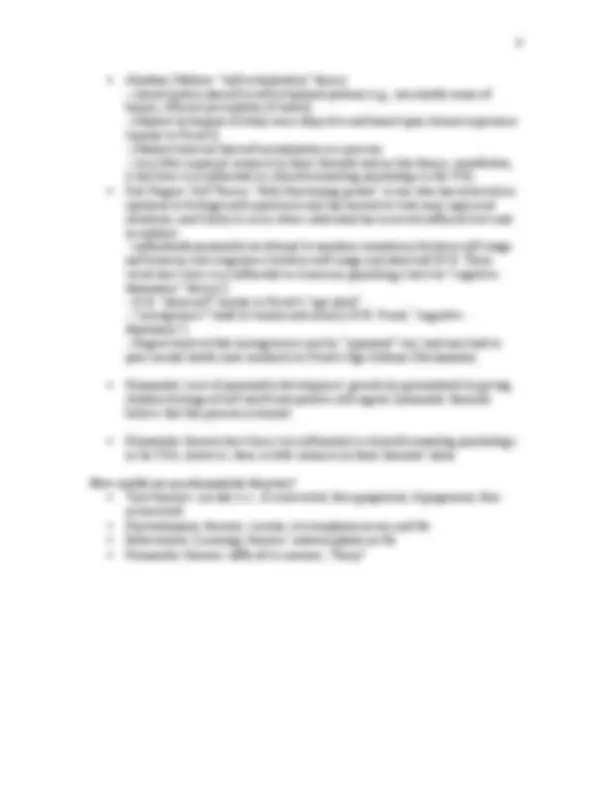




Study with the several resources on Docsity

Earn points by helping other students or get them with a premium plan


Prepare for your exams
Study with the several resources on Docsity

Earn points to download
Earn points by helping other students or get them with a premium plan
Community
Ask the community for help and clear up your study doubts
Discover the best universities in your country according to Docsity users
Free resources
Download our free guides on studying techniques, anxiety management strategies, and thesis advice from Docsity tutors
Material Type: Exam; Class: General Psychology; Subject: Psychology; University: Fayetteville State University; Term: Unknown 1989;
Typology: Exams
1 / 4

This page cannot be seen from the preview
Don't miss anything!



Study Guide: Personality Clara B. Jones, Ph.D. Na x Nu--Æ Be
What is personality?: An individual’s unique and relatively stable behavior patterns
--Traits: specific lasting qualities within a person that are inferred from observed behavior; traits imply consistency (Discussion/thought question: What do you perceive to be your most characteristic personality traits?)
--Personality “types” (e.g., “motherly type,” “athletic type,” “strong, silent type”)
--Self-concept: an individual’s perception of his/her own personality traits; all your ideas and feelings about who you are
Personality Theory: system of assumptions, ideas, and principles proposed to explain personality. Four broad theoretical perspectives: Trait Theories, Psychodynamic Theories, Behavioristic Theories, and Humanistic Theories
Anal Stage (1 – 3 yrs)
Phallic (3 – 6 yrs): Oedipus Conflict (♂♂); Electra Conflict [♀♀: “penis envy” (according to this idea, ♀♀ feel “castrated”; thus, “the other,” “lack,” ♀♀ as inadequate ♂♂)]
Latency (6 – 11 yrs) n.b. some texts dispute whether Freud intended this to be a stage
Genital (puberty through adulthood) n.b. Freud’s influential but incorrect view of the female orgasm
How useful are psychoanalytic theories?